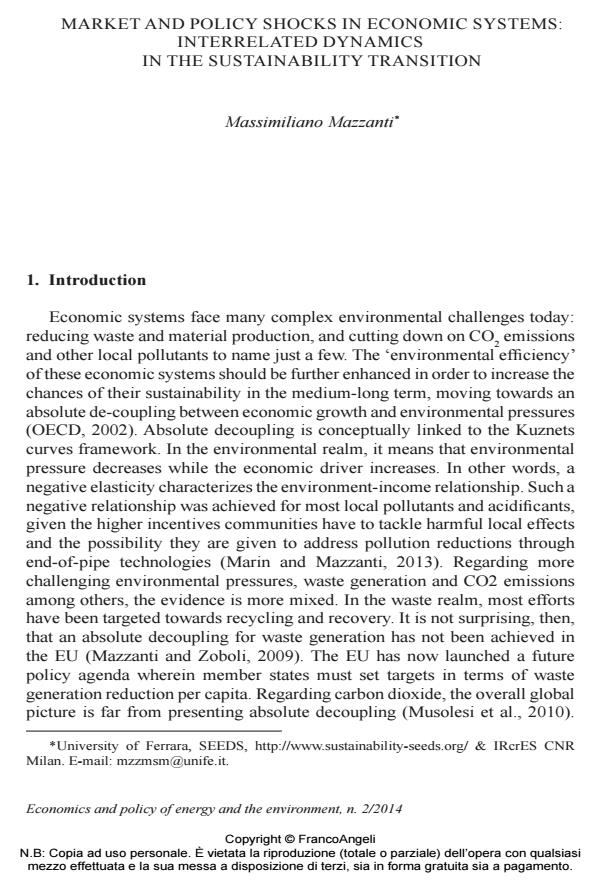Market and policy shocks in economic systems: interrelated dynamics in the sustainability transition
Journal title ECONOMICS AND POLICY OF ENERGY AND THE ENVIRONMENT
Author/s Massimiliano Mazzanti
Publishing Year 2015 Issue 2014/2
Language English Pages 12 P. 153-164 File size 243 KB
DOI 10.3280/EFE2014-002008
DOI is like a bar code for intellectual property: to have more infomation
click here
Below, you can see the article first page
If you want to buy this article in PDF format, you can do it, following the instructions to buy download credits

FrancoAngeli is member of Publishers International Linking Association, Inc (PILA), a not-for-profit association which run the CrossRef service enabling links to and from online scholarly content.
This note addresses the issue of market and policy shocks in the transition to sustainability. Market Shocks may be driven by price volatility; policy shocks are likely to occur either given contingent conditions of policy feasibility - a concept that shifts over time - or in reaction to extreme climatic events. The paper questions the role of ‘events’ as drivers of change, with a focus on innovation responses. In doing so, it broadens the perspective on environmental policy’s role and effects. Environmental policy is connected to institutional and market dynamics. It is not limited to the Pigovian rationale - the mere minimization of current costs - but rather tied to a ‘standard and cost approach’ which attempts to incorporate efficiency concepts in a dynamic scenario, where learning and adaptation through technological and behavioral changes are crucial.
Keywords: Shocks, environmental performances, dynamics, policy
Jel codes: O1, Q5
Massimiliano Mazzanti, Market and policy shocks in economic systems: interrelated dynamics in the sustainability transition in "ECONOMICS AND POLICY OF ENERGY AND THE ENVIRONMENT" 2/2014, pp 153-164, DOI: 10.3280/EFE2014-002008